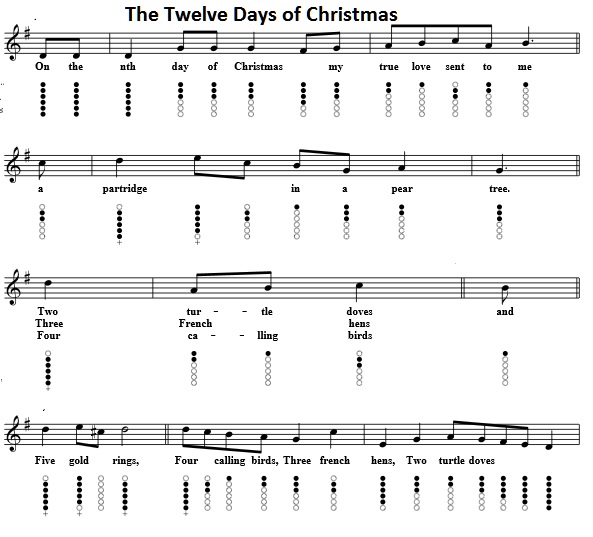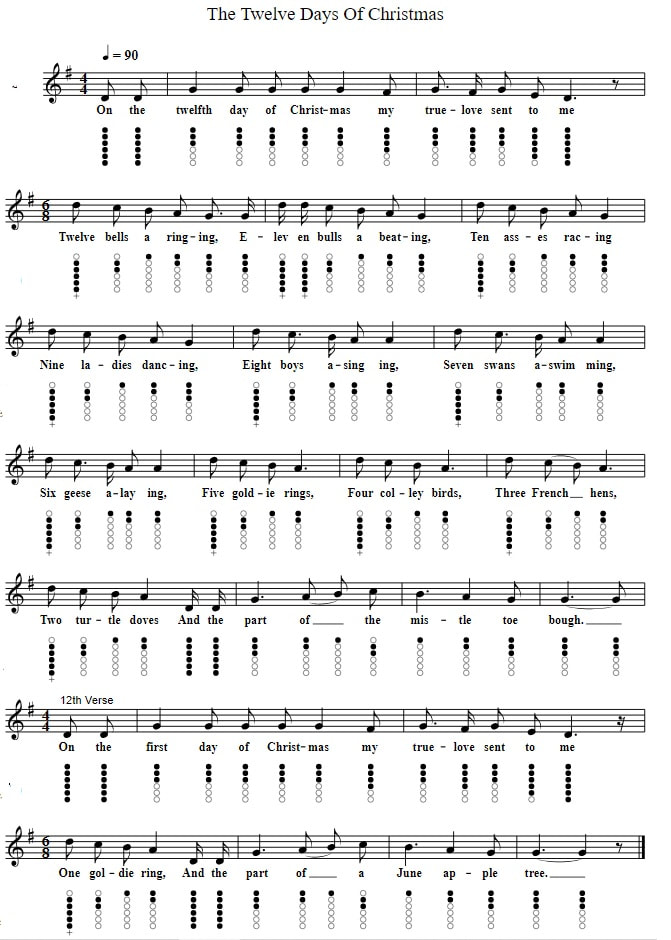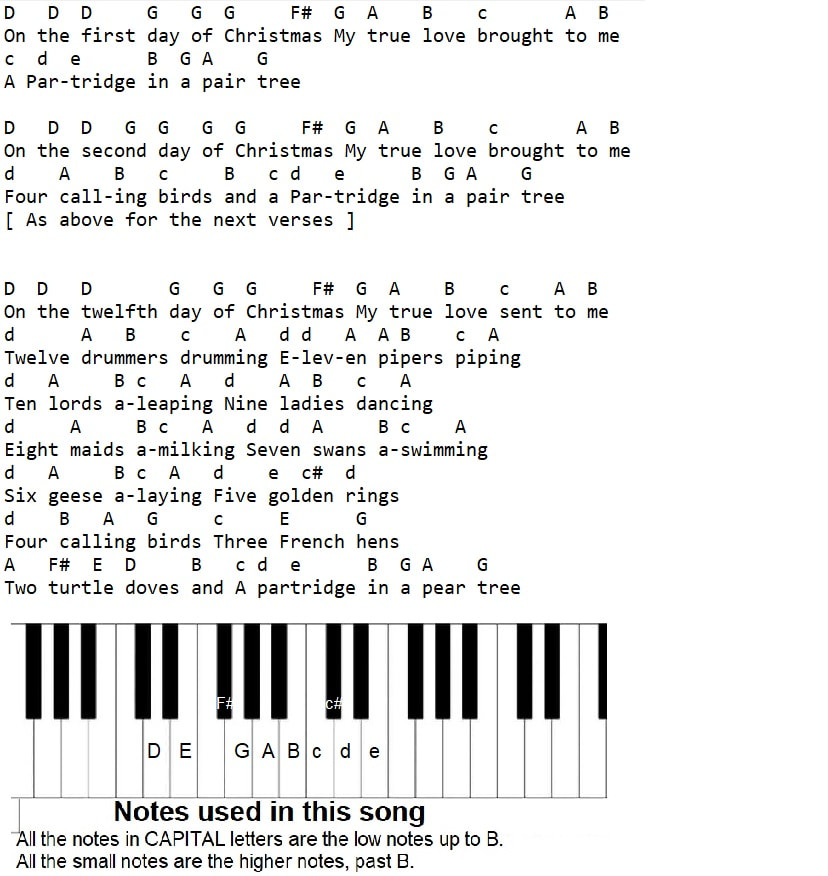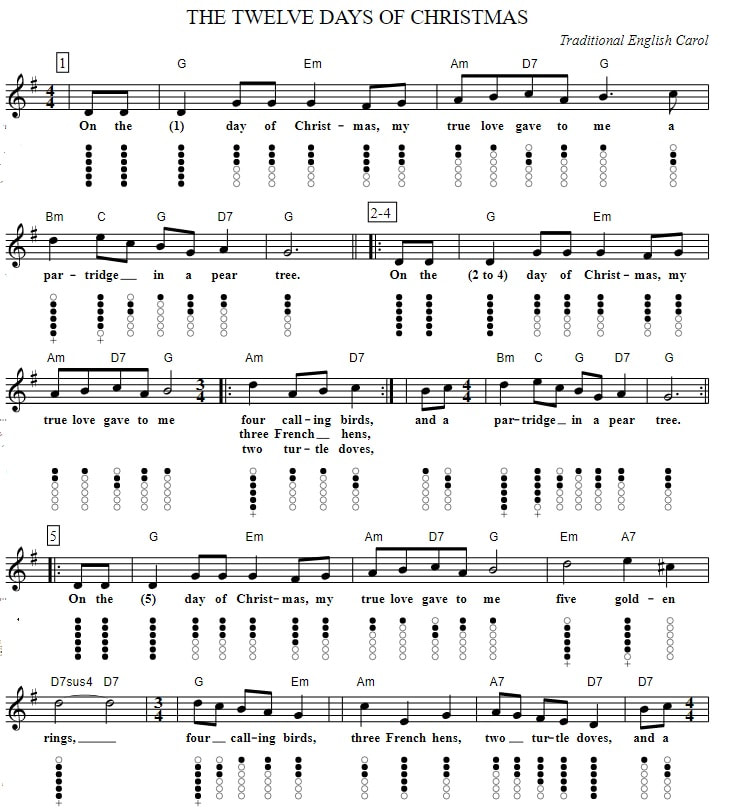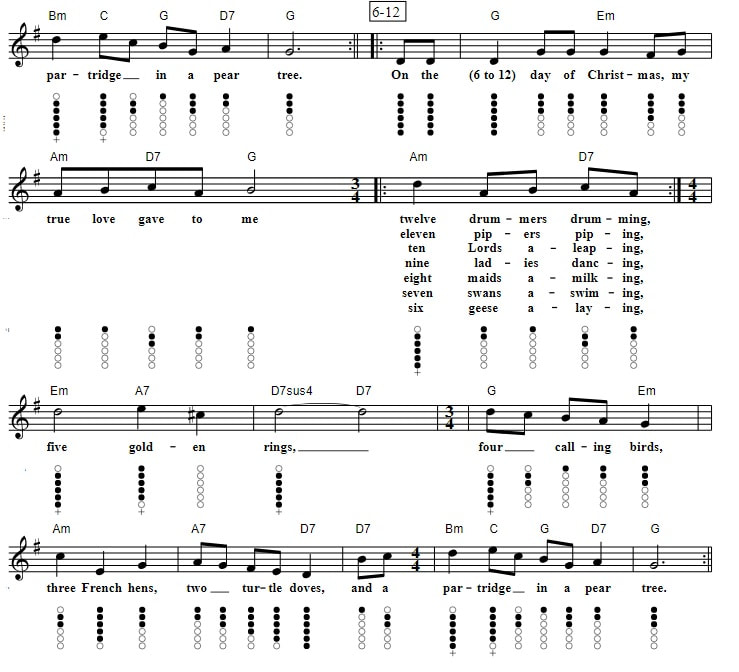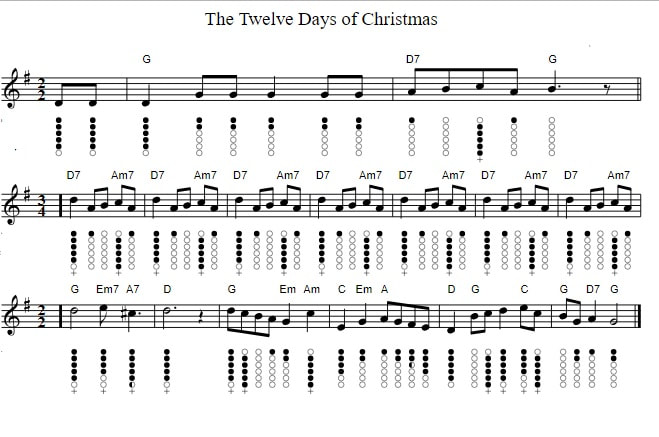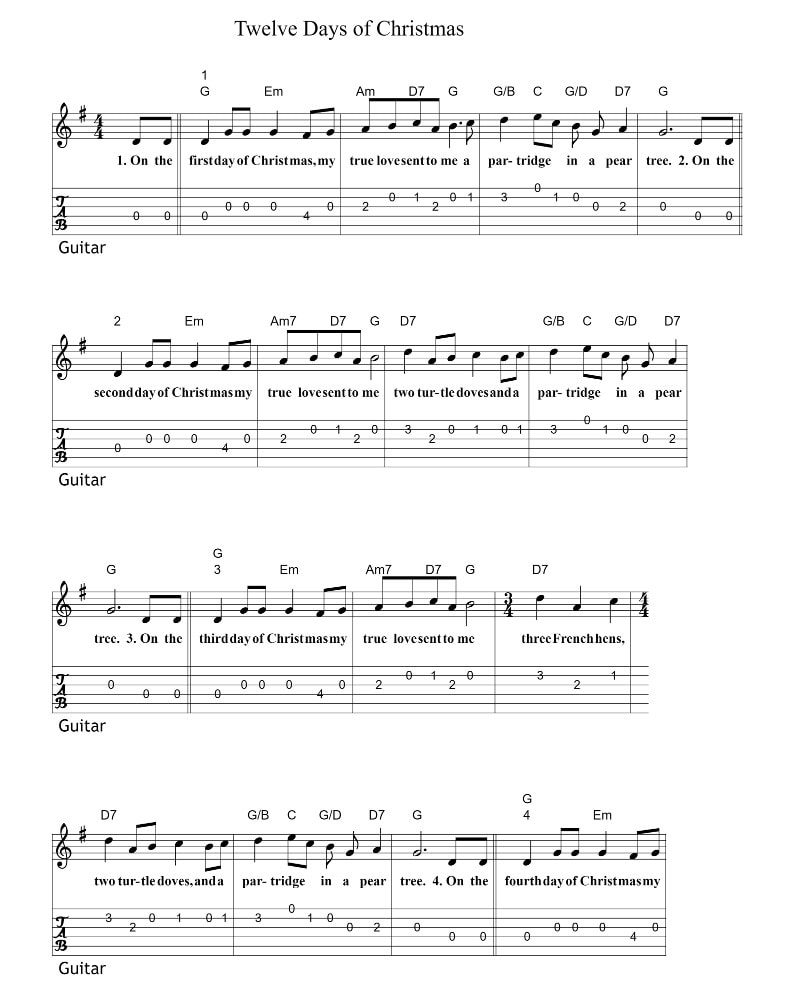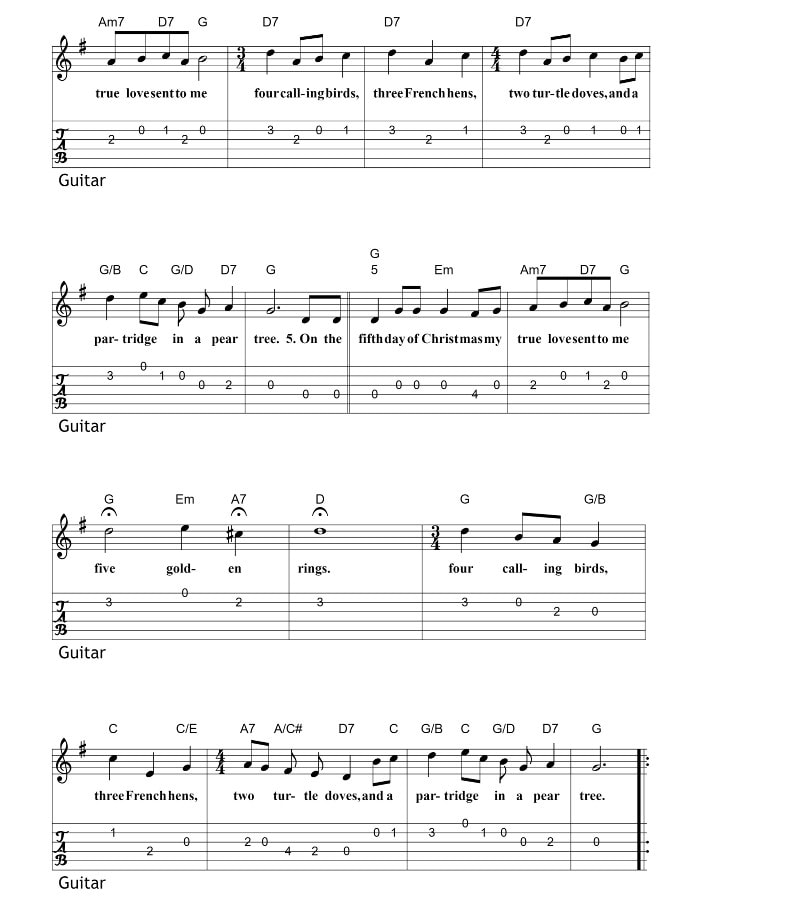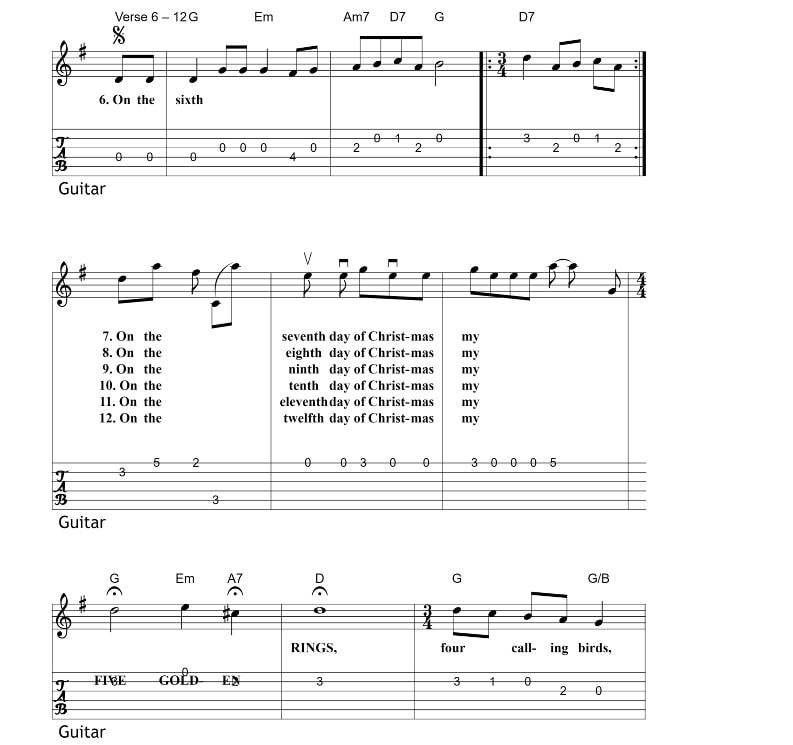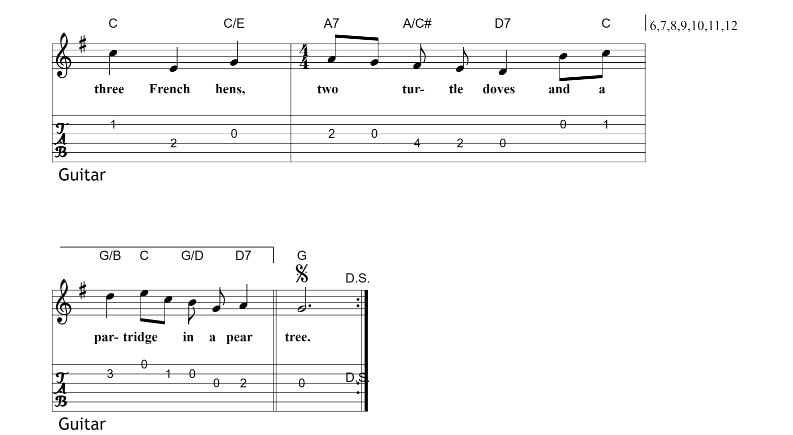The Twelve Days Of Christmas Tin Whistle Sheet Music
The twelve days of Christmas piano keyboard letter notes now included. This Christmas carol is set to be played on a ''D'' key whistle. The second version of the sheet music is set up to be played on a whistle in the key of C only. The third version of the sheet music has the piano chords included. The twelve days of Christmas guitar tab fingerstyle with chords.
The Twelve Days of Christmas is a beloved holiday tradition that has been passed down for centuries. It is a song that is sung, a game that is played, and a celebration that is observed in many different cultures and countries around the world. Despite its popularity, the origins and meaning of this iconic holiday tune are often misunderstood. In this thesis, we will delve into the history and symbolism behind The Twelve Days of Christmas, exploring its origins, evolution, and significance in modern society.
Origins of The Twelve Days of Christmas
The origins of The Twelve Days of Christmas can be traced back to medieval Europe, where a Christian festival known as 'Christmastide' or 'Twelvetide' was celebrated. This festival lasted for twelve days, beginning on Christmas Day (December 25th) and ending on the Feast of the Epiphany (January 6th). This period of time was seen as a joyful and festive season, with feasting, drinking, and gift-giving.
The earliest known version of the song can be found in a children's book titled Mirth Without Mischief, published in 1780 in London. It is believed that the song was composed much earlier, possibly in the 16th century. However, the lyrics and tune have evolved over time, with various versions and variations appearing in different countries and cultures.
Symbolism of The Twelve Days of Christmas
The lyrics of The Twelve Days of Christmas are filled with symbolism, hidden meanings, and religious references. Many believe that the song was a way for Catholics in England to secretly practice their faith during a time when it was illegal to do so. Each of the twelve days represents a different Christian symbol or lesson, as follows:
Day 1: 'A partridge in a pear tree' represents Jesus Christ, the 'true love' who gave his life for us.
Day 2: 'Two turtle doves' symbolize the Old and New Testaments of the Bible.
Day 3: 'Three French hens' represent the three virtues of faith, hope, and love.
Day 4: 'Four calling birds' represent the four Gospels of the New Testament.
Day 5: 'Five golden rings' symbolize the first five books of the Old Testament, known as the Pentateuch.
Day 6: 'Six geese a-laying' represent the six days of creation in the book of Genesis.
Day 7: 'Seven swans a-swimming' symbolize the seven gifts of the Holy Spirit.
Day 8: 'Eight maids a-milking' represent the eight Beatitudes from Jesus' Sermon on the Mount.
Day 9: 'Nine ladies dancing' symbolize the nine fruits of the Holy Spirit.
Day 10: 'Ten lords a-leaping' represent the Ten Commandments.
Day 11: 'Eleven pipers piping' symbolize the eleven faithful apostles.
Day 12: 'Twelve drummers drumming' represent the twelve points of belief in the Apostles' Creed.
Evolution of The Twelve Days of Christmas
Over time, the lyrics and tune of The Twelve Days of Christmas have evolved, with various versions and variations appearing in different countries and cultures. In the early 19th century, the song became a popular game, where players would sing the lyrics and perform specific actions for each verse. For example, on the first day, the player would hold up one finger for the partridge, and on the twelfth day, they would perform all twelve actions.
In the 20th century, The Twelve Days of Christmas became a popular Christmas carol, with many well-known artists recording their own versions. The song has also been adapted into various forms, including books, movies, and plays. In recent years, the song has also been parodied and used in marketing campaigns, further cementing its place in popular culture.
Significance of The Twelve Days of Christmas in Modern Society
Today, The Twelve Days of Christmas is still celebrated and recognized as a traditional Christmas carol. It is often sung in churches, schools, and community events during the holiday season. The symbolism and religious references in the song have also been embraced by Christians, who use it as a way to teach children about the Christian faith.
Furthermore, the song has also become a popular way to celebrate the holiday season, with many people using it as a countdown to Christmas. Some families even choose to celebrate each of the twelve days with special activities or traditions, such as baking Christmas cookies, watching holiday movies, or giving small gifts to each other.
Conclusion
In conclusion, The Twelve Days of Christmas is a beloved holiday tradition that has stood the test of time. Its origins can be traced back to medieval Europe, where it was used to secretly practice the Christian faith. The song is filled with symbolism and religious references, and its evolution over time has made it a popular Christmas carol and a symbol of the holiday season. Despite its many variations and adaptations, The Twelve Days of Christmas continues to hold a special place in the hearts of people around the world, making it a truly timeless and cherished holiday tradition.
Below is the list of sheet music and tin whistle songs that are in my ebooks. This is the largest collection of tin whistle songs ever put together.[over 800 songs ] Including folk, pop and trad tunes plus German And French songs along with Christmas Carols.
All of the sheet music tabs have been made as easy to play as was possible.
The price of the ebooks is €7.50
All of the sheet music tabs have been made as easy to play as was possible.
The price of the ebooks is €7.50
